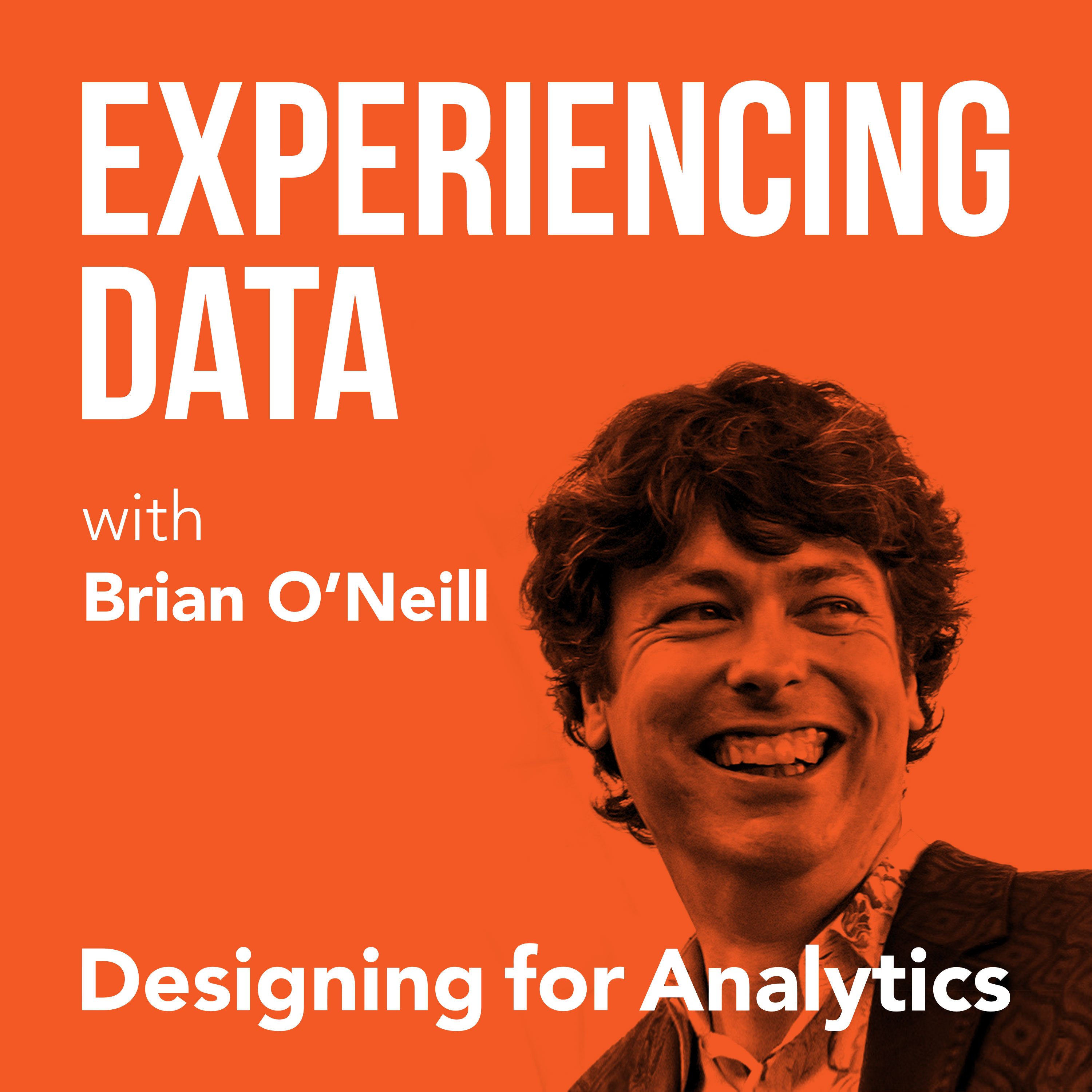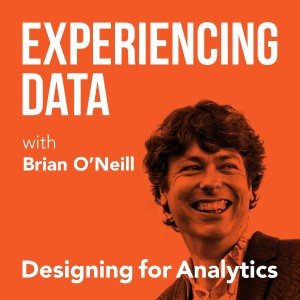

153.7K
Downloads
184
Episodes
Is the value of your enterprise analytics SAAS or AI product not obvious through it’s UI/UX? Got the data and ML models right...but user adoption of your dashboards and UI isn’t what you hoped it would be?
While it is easier than ever to create AI and analytics solutions from a technology perspective, do you find as a founder or product leader that getting users to use and buyers to buy seems harder than it should be?
If you lead an internal enterprise data team, have you heard that a ”data product” approach can help—but you’re concerned it’s all hype?
My name is Brian T. O’Neill, and on Experiencing Data—one of the top 2% of podcasts in the world—I share the stories of leaders who are leveraging product and UX design to make SAAS analytics, AI applications, and internal data products indispensable to their customers. After all, you can’t create business value with data if the humans in the loop can’t or won’t use your solutions.
Every 2 weeks, I release interviews with experts and impressive people I’ve met who are doing interesting work at the intersection of enterprise software product management, UX design, AI and analytics—work that you need to hear about and from whom I hope you can borrow strategies.
I also occasionally record solo episodes on applying UI/UX design strategies to data products—so you and your team can unlock financial value by making your users’ and customers’ lives better.
Hashtag: #ExperiencingData.
JOIN MY INSIGHTS LIST FOR 1-PAGE EPISODE SUMMARIES, TRANSCRIPTS, AND FREE UX STRATEGY TIPS
https://designingforanalytics.com/ed
ABOUT THE HOST, BRIAN T. O’NEILL:
https://designingforanalytics.com/bio/
Episodes

Tuesday Apr 01, 2025
Tuesday Apr 01, 2025
Today I am going to try to answer a fundamental question: how should you actually measure user experience, especially with data products—and tie this to business value? It's easy to get lost in analytics and think we're seeing the whole picture, but I argue that this is far from the truth. Product leaders need to understand the subjective experience of our users—and unfortunately, analytics does not tell us this.
The map is not the territory.
In this episode, I discuss why qualitative data and subjective experience is the data that will most help you make product decisions that will lead you to increased business value. If users aren't getting value from your product(s), and their lives aren’t improving, business value will be extremely difficult to create. So today, I share my thoughts on how to move beyond thinking that analytics is the only way to track UX, and how this helps product leaders uncover opportunities to produce better organizational value.
Ultimately, it’s about creating indispensable solutions and building trust, which is key for any product team looking to make a real impact. Hat tip to UX guru Jared Spool who inspired several of the concepts I share with you today.
Highlights/ Skip to
- Don't target adoption for adoption's sake, because product usage can be a tax or benefit (3:00)
- Why your analytical mind may bias you—and what changes you might have to do this type of product and user research work (7:31)
- How "making the user's life better" translates to organizational value (10:17)
- Using Jared Spool's roller coaster chart to measure your product’s user experience and find your opportunities and successes (13:05)
- How do you measure that you have done a good job with your UX? (17:28)
- Conclusions and final thoughts (21:06)
Quotes from Today’s Episode
- Usage doesn't automatically equal value. Analytics on your analytics is not telling you useful things about user experience or satisfaction. Why? "The map is not the territory." Analytics measure computer metrics, not feelings, and let's face it, users aren't always rational. To truly gauge user value, we need qualitative research - to talk to users - and to hear what their subjective experience is. Want *meaningful* adoption? Talk to and observe your users. That's how you know you are actually making things better. When it’s better for them, the business value will follow. (3:12)
- Make better things—where better is a measurement based on the subjective experience of the user—not analytics. Usable doesn’t mean they will necessarily want it. Sessions and page views don’t tell you how people *feel* about it. (7:39)
- Think about the dreadful tools you and so many have been forced to use: the things that waste your time and don’t let you focus on what’s really important. Ever talked to a data scientist who is sick of doing data prep instead of building models, and wondering, “why am I here? This isn’t what I went to school for.” Ignoring these personal frustrations and feelings and focusing only on your customers’ feature requests, JIRA tickets, stakeholder orders, requirements docs, and backlog items is why many teams end up building technically right, effectively wrong solutions. These end user frustrations are where we find our opportunities to delight—and create products and UXs that matter. To improve their lives, we need to dig into their workflows, identify frustrations, and understand the context around our data product solutions. Product leaders need to fall in love with the problems and the frustrations—these are the magic keys to the value kingdom. However, to do this well, you probably need to be doing less delivery and more discovery. (10:27)
- Imagine a line chart with a Y-axis that is "frustration" at the bottom to "delight" at the top. The X-axis is their user experience, taking place over time. As somebody uses your data product to do their job/task, you can plot their emotional journey. “Get the data, format the data, include the data in a tool, derive some conclusion, challenge the data, share it, make a decision” etc. As a product manager, you probably know what a use-case looks like. Your first job is to plot their existing experience trying/doing that use case with your data product. Where are they frustrated? Where are they delighted? Celebrate your peaks/delighters, and fall in love with the valleys where satisfaction work needs to be done. Connect the dots between these valleys and business value. Address the valleys—especially the ones that impede business value—and you’ll be on your way to “showing the value of your data product.” Analytics on your data product won’t tell you this information; the map is not the territory. (13:22)
- Analytics about your data product are lying to you. They give you the facts about the product, but not about the user. An example? “Time spent” doing a task. How long is too long? 5 minutes? 50? Analytics will tell you precisely how long it took. The problem is, it won’t tell you how long it FELT it took. And guess what? Your customers and users only care about how long it felt it took—vs. their expectation. Sure, at some point, analytics might eventually help—at scale—understand how your data product is doing—but first you have to understand how people FEEL about it. Only then will you know whether 5 minutes, or 50 minutes is telling you anything meaningful about what—if anything—needs to change. (16:17)
No comments yet. Be the first to say something!